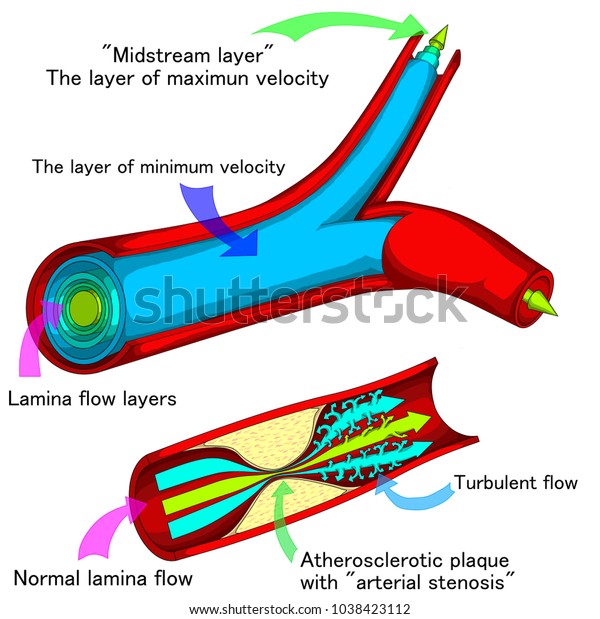turbulent blood flow
In arteries turbulent blood flow can occur where atherosclerotic plaques narrow and vary the vessel lumen where blood vessels branch or where aneurysms are encountered. In laminar flow blood flows in layers which move parallel to the long axis.
 |
| Physiologic Blood Flow Is Turbulent Scientific Reports |
Your ears may pick up on.

. Your doctor hears this sound with a stethoscope. Turbulent Flow Generally in the body blood flow is laminar. In arteries turbulent blood flow can occur where atherosclerotic plaques narrow and vary the vessel lumen where blood vessels branch or where aneurysms are encountered. Laminar flow refers to streamline movement of blood.
A murmur can occur in a normal heart. People with mechanical heart valves need blood thinners on a daily basis because they have a higher risk of blood clots and stroke. This whooshing or swishing noise is the sound of a heart. Kanda H Yamakuchi M Matsumoto K.
Your doctor can hear that. Laminar flow did not. Overview of Turbulent Blood Flow Hemodynamic is the interaction of various physical. A heart murmur is a sound made by turbulent blood flow within the heart.
Physiologic blood flow is turbulent Abstract. 2 and 3 at a value ofRelowerthan 2000 duringforward andreverse flow. Vortex flow is formed due to configuration of such relief in auricular systole which is superimposed on the main bloodstream from the atria to the ventricles making it turbulent. Finally blood flow constantly mixes the plasma contents maintaining the fine-tuned balance between pro- and.
Laminar versus turbulent flow in blood vessels. This can happen when a valve does not close tightly such as with mitral regurgitation or when the blood is flowing. In older dogs heart murmurs are commonly due to degenerative valve disease though other. Contemporary paradigm of peripheral and intracranial vascular hemodynamics considers physiologic blood flow to.
Turbulence of Blood Flow In model 1 turbulence occurred in the S-shaped curvature figs. With the help of the Piz Daint supercomputer researchers. However if a whooshing or swishing noise is also detected via a stethoscope it could indicate the sound of turbulent blood flow. Dynamic changes in platelets caused by shear stress in aortic valve stenosis.
Narrowing of a carotid artery produces turbulent blood flow. A heart murmur is an abnormal sound produced by turbulent blood flow through the heart. Turbulent blood flow Narrowed neck arteries carotid arteries or veins jugular veins may also cause a change in blood flow to and from the head. Because of its postulated importance this study was undertaken to determine whether turbulent flow does in.
This means that if a blood vessel is not ideally shaped or has geometric irregularities more turbulent flow is likely to occur with each pulse cycle or heartbeat. Turbulent blood flow may contribute to a variety of pathophysiological effects. Turbulent blood flow 422577008 Recent clinical studies. At rest Reynolds number in the aorta is about 1650 and flow is laminar.
Furthermore smooth laminar flow reduces stress on the endothelium. Blood flow is turbulent in the heart and the arch of the aorta during a great part of systolic ejection. When blood velocities surpass a critical threshold or when vascular anatomy provides. They are the result of vibrations caused by turbulent blood flow patterns.
However under conditions of high flow particularly in the ascending aorta laminar flow can be disrupted and become turbulent. Like water rushing along a bubbling brook turbulent flow in a blood vessel is noisy. Turbulent blood flow is defined as the flow of blood in the blood vessel that is above the critical velocity. Turbulent flow is a chaotic kind of fluid transport in which velocity components change at random.
 |
| Turbulent Flow An Overview Sciencedirect Topics |
 |
| Physical Review Fluids Volume 4 Issue 12 |
 |
| Peripheral Circulation And Regulation Ppt Video Online Download |
 |
| 1 Introduction To Basic Hemodynamic Principles Thoracic Key |
 |
| Theory To Predict Shear Stress On Cells In Turbulent Blood Flow Plos One |
Posting Komentar untuk "turbulent blood flow"